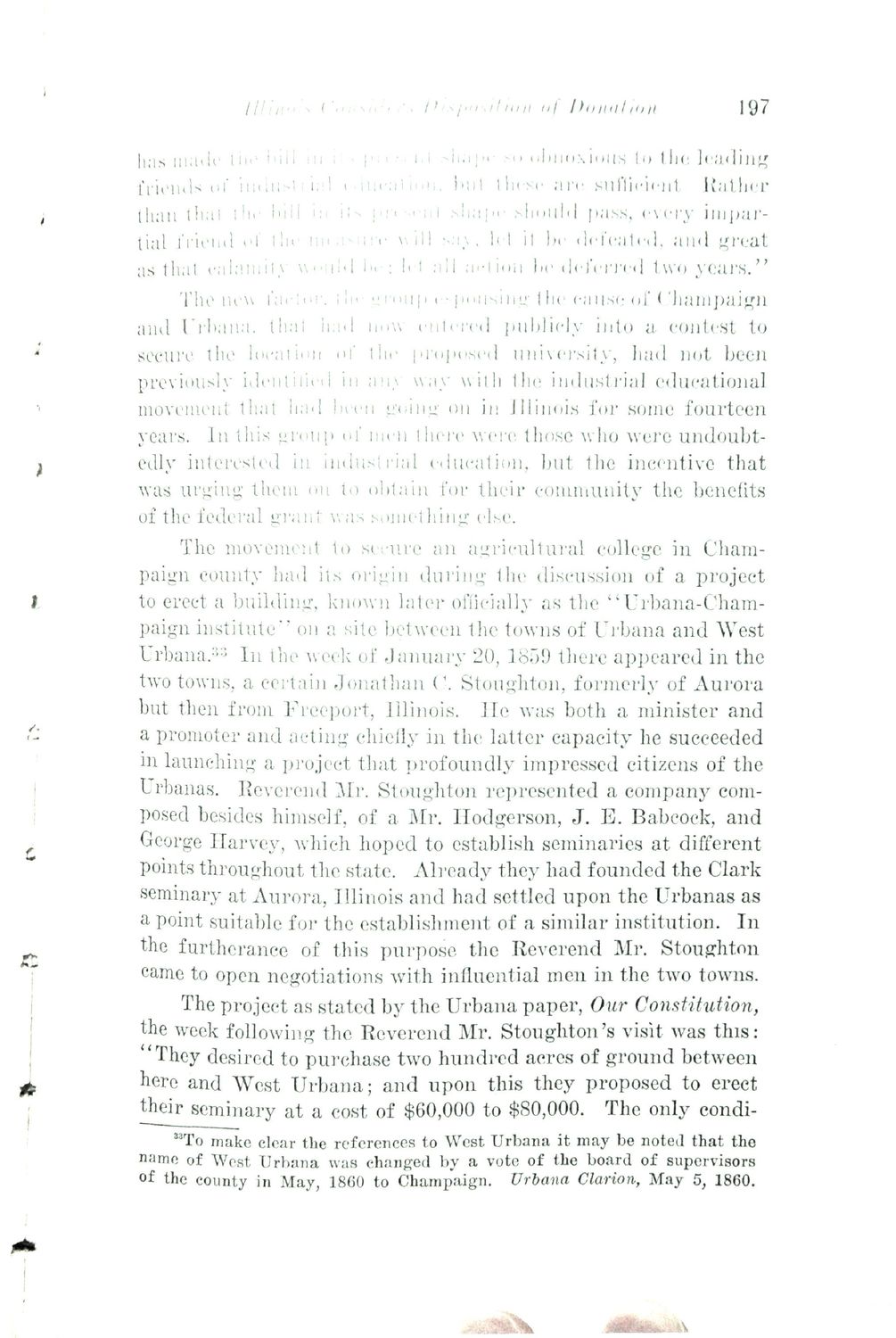| |
| |
Caption: Book - History of the University (Powell)
This is a reduced-resolution page image for fast online browsing.

EXTRACTED TEXT FROM PAGE:
Illinois Considers Disposition of Donation 197 has made the bill in its present shape so obnoxious to the leading friends of industrial education, but these are sufficient Rather than that the bill in its present shape should pass, every impartial friend of the measure will say, let it be defeated, and great as that calamity would be; let all action be deferred two years." The new factor, the group espousing the cause of Champaign and Urbana, that had now entered publicly into a contest to secure the location of the proposed university, had not been previously identified in any way with the industrial educational movement that had been going on in Illinois for some fourteen years. In this group of men there were those who were undoubtedly interested in industrial education, but the incentive that was urging them on to obtain for their community the benefits of the federal grant was something else. The movement to secure an agricultural college in Champaign county had its origin during the discussion of a project to erect a building, known later officially as the "Urbana-Champaign institute" on a site between the towns of Urbana and West Urbana.33 In the week of January 20,1859 there appeared in the two towns, a certain Jonathan C. Stoughton, formerly of Aurora but then from Freeport, Illinois. He was both a minister and a promoter and acting chiefly in the latter capacity he succeeded in launching a project that profoundly impressed citizens of the Urbanas. Reverend Mr. Stoughton represented a company composed besides himself, of a Mr. Hodgerson, J. E. Babcock, and George Harvey, which hoped to establish seminaries at different points throughout the state. Already they had founded the Clark seminary at Aurora, Illinois and had settled upon the Urbanas as a point suitable for the establishment of a similar institution. In the furtherance of this purpose the Reverend Mr. Stoughton came to open negotiations with influential men in the two towns. The project as stated by the Urbana paper, Our Constitution, the week following the Reverend Mr. Stoughton's visit was this: 'They desired to purchase two hundred acres of ground between W e and West Urbana; and upon this they proposed to erect their seminary at a cost of $60,000 to $80,000. The only condiTo make clear the references to West Urbana it may be noted that the name of West Urbana was changed by a vote of the board of supervisors of the county in May, 1860 to Champaign. Urbana Clarion, May 5, 1860. M
| |